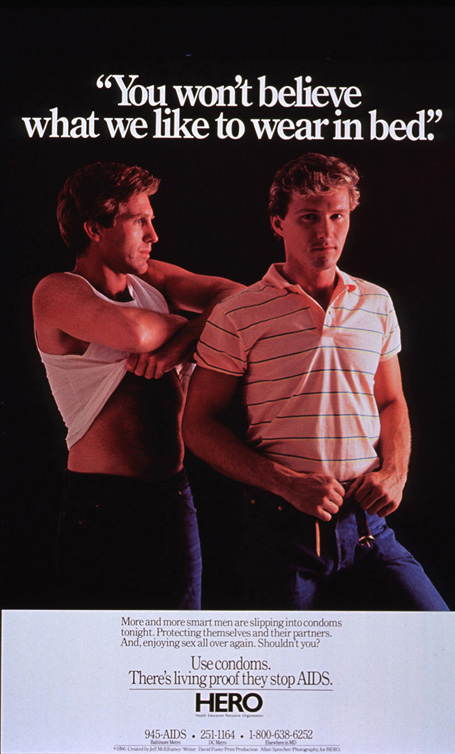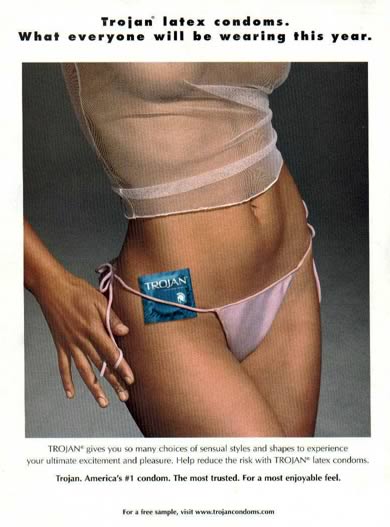The History of Condoms

By:
These days, many guys won't be caught dead without a condom on hand if they're out partying or entering a social situation that might end up in a sexual encounter. Girls also frequently carry a rubber or two.
There is a lot of discussion around how much condoms are actually being used, though. It's difficult to nail down figures because people pick and choose in which situations they will use them. But research suggests that condom use has definitely increased in many ways.
Related: A Color-Changing Condom Could Revolutionize Sexual Health
Did people (ahem, my parents) use condoms in the 70s?
 Etsy - etsystatic.com
Etsy - etsystatic.com
In the 1970s, it wasn't unusual for a person to engage in sex without a condom. By contrast, about 84 percent of women surveyed in a 2010 study said they used a condom during their first premarital sex encounter (that's up from 55 percent in 1985). Meanwhile, condom use among adult males has increased on average to 93 percent in 2006-'10 from 52 percent in 1982.
Related: The Bitter Truth About Condoms
At what age to people stop using condoms?
Each age group and gender uses condoms differently, and condom use appears to decrease with age. About 60 percent of sexually active teenagers use condoms, according to a 2012 study. But most people over the age of 50 do not use condoms, according to a 2010 study. (That may be why STDs among seniors have increased drastically in the past decade. Nursing homes aren't as wholesome as you think.)
More: How Your Condom Use Changes with Age
Homophobia during the AIDS crisis likely discouraged condom use.
 Smithsonian Mag / Health Education Resource Organization - smithsonianmag.com
Smithsonian Mag / Health Education Resource Organization - smithsonianmag.com
Increased knowledge about the transmission of STDs — in particular, HIV and AIDS — and concerns about unwanted pregnancy have contributed to the use of condoms. "Part of the public health campaigns during the AIDS epidemic [of the 1980s] had been to use condoms," Aileen Gariepy, an assistant professor of Obstetrics, Gynecology, and Reproductive Sciences at Yale University, told ATTN:.
That effort was not without controversy. Early in the AIDS crisis, many people thought that the disease was primarily contracted through male homosexual contact. That complicated efforts by health groups who wanted to use AIDS as an example of the dangers of unprotected sex and generated opposition from both Christian churches and some public officials. GOP North Carolina Sen. Jesse Helms famously argued in 1990 that the way to fight AIDS was to enforce anti-sodomy laws.
Many argue that former President Ronald Reagan's commitment to abstinence education and his belief that AIDS was only contracted by male homosexuals prevented condom use from growing as quickly as it might have. Still, in the late 1980s and early 1990s, many companies and health groups pushed condom use as the best way to prevent AIDS and other diseases.
Condom marketing has helped.
 About Face - about-face.org
About Face - about-face.org
Condom companies increased ad spending over the course of the 1980s to around $10 million per year from an earlier average of $250,000. And some of that advertising was pretty controversial. ''I'll do a lot for love, but I'm not ready to die for it,'' a woman said in a Lifestyles condom ad in 1988.
The effect of sex ed.
 Flickr.com/francisco_osorio - flickr.com
Flickr.com/francisco_osorio - flickr.com
Over time, the promotion helped to change things. Meanwhile, many school districts turned away from ineffective abstinence-only sex education to one that focused more on contraception. As a result, young people became more aware of the benefits of using condoms.
Related: College Sophomores Are Abandoning Condoms
Even so, condom use remains inconsistent. "Part of the problem with condom use is embarrassment over purchasing condoms, partner negotiation (one partner wants to use one but the other doesn’t), subjective feelings of decreased pleasure, and need to anticipate sex," Gariepy said. "Researchers are working on biofilm and other materials that work as good as condoms, but that feel better."
Gariepy added that she's concerned with the growing resurgence of abstinence-only education in the United States, which has largely been pushed by religious groups and politicians.
For his part, Microsoft billionaire Bill Gates is investing millions in promoting the use of contraceptives all over the world and trying to create a condom that is more pleasurable for its users. Perhaps when we get to the point of seeing no reason not to wear condoms, then they'll be used a lot more. After all, people still don't want to die for love.
